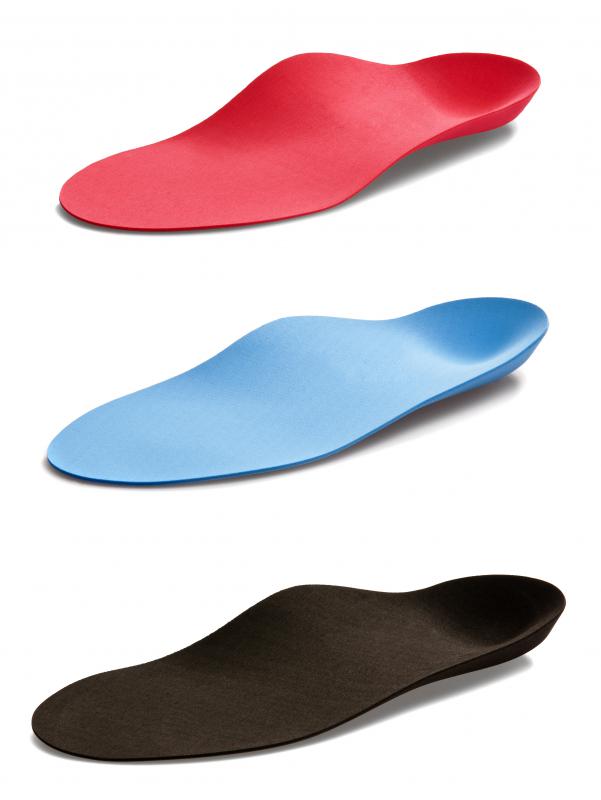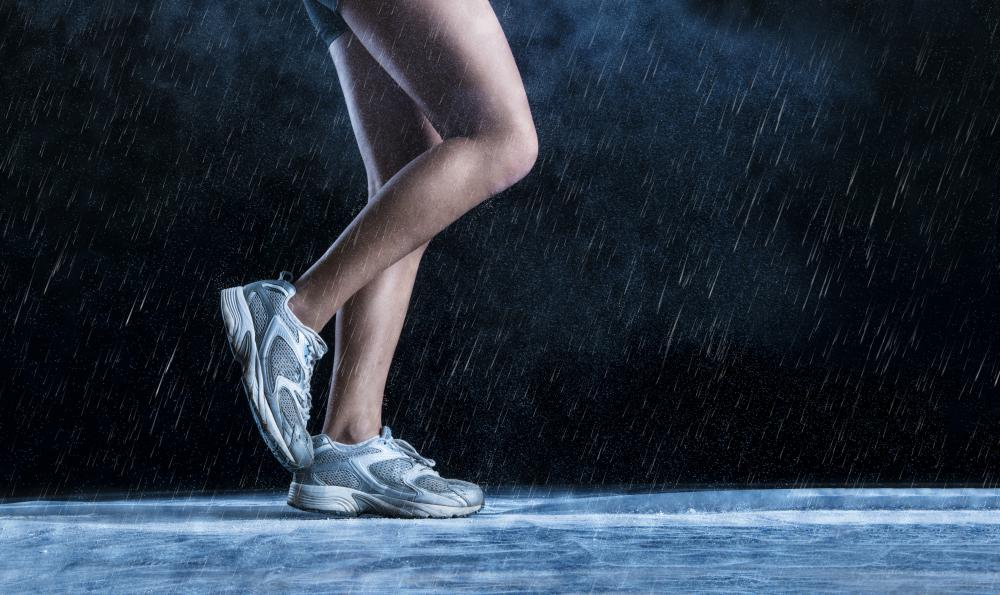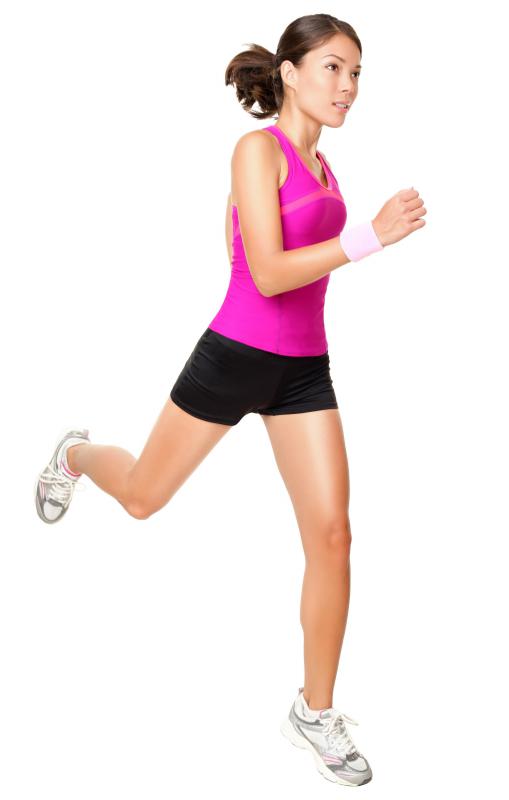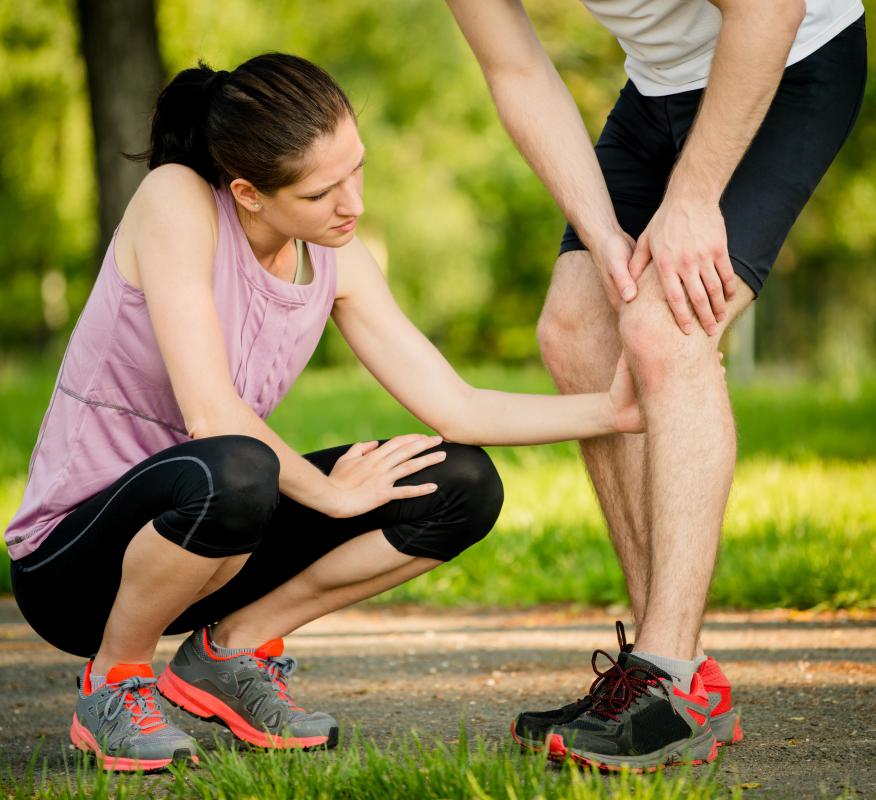At WiseGEEK, we're committed to delivering accurate, trustworthy information. Our expert-authored content is rigorously fact-checked and sourced from credible authorities. Discover how we uphold the highest standards in providing you with reliable knowledge.
What is the Connection Between Shin Splints and Shoes?
Shin splints and shoes can be connected when athletes are not wearing shoes appropriate to their needs, leading to injuries sustained during athletic training. Shoes are not necessarily the only cause of shin splints, but they are a common enough culprit that athletes are usually asked about their shoes when seeking treatment for shin splints. Selecting the right shoes usually requires going to a sports store to have shoes fitted with the assistance of a professional with some training in athletic shoes.
The blanket term “shin splints” describes a number of different conditions associated with pain in the lower leg, ranging from soft tissue injuries around the calf to hairline fractures in the tibia. Shin splints are caused by stress and overexertion. In the case of shin splints and shoes, the wrong shoes can force someone to work harder and apply uneven stress to the feet and legs, causing injuries.

Shoes inadequate for the activity are a common problem. Athletic shoes need to have good shock protection to reduce the risks of injury to the athlete's feet. They should be flexible and also need to provide adequate support to the ankle. If people wear shoes not designed for a specific application, or persist in wearing old shoes that have worn down, shin splints can develop. The known connection between shin splints and shoes has led a number of athletic companies to develop ranges of shoes so athletes can choose the best shoes for a given activity.

The needs of the athlete are also a consideration. People with gait problems like overpronation may need to wear corrective shoes or inserts to stabilize their gait while running, hiking, and engaging in other activities. If they wear standard shoes, shin splints can develop because their feet and legs are put under more stress than they are designed to handle. Wearing corrective shoes when you do not need correction can also be a problem, as these shoes will throw your gait off and stress your legs.

People concerned about shin splints and shoes can get a fitting with an athletic shoe consultant. The consultant will watch the athlete walk, talk to the athlete about the sports she engages in, and provide a number of shoes to try on. A coach can also provide advice for athletes addressing concerns about shin splints and shoes. It is important to try several pairs to find the ones with the best fit and shock protection. If shoes feel uncomfortable in the store, they will feel uncomfortable later, too, and people should not be shy about speaking up to describe discomfort, even if they can't articulate why the shoes don't fit quite right.
AS FEATURED ON:
AS FEATURED ON:














Discussion Comments
I played a lot of basketball when I was younger, so shin splints and I know one another well. A good pair of shoes can go a long way in decreasing the pain of shin splints, but when you workout and put a lot of pressure on your legs and feet it's a good idea to use different remedies.
Shin splints wraps and bandages for the leg can absorb a lot of the shock your lower body gets when you are exercising. You might want to try ankle braces and foot wraps, too. I think the best shin splint shoes are running shoes, but unfortunately these are not good for all sports.
I was pleasantly surprised at the difference that inserts made in the comfort of my shoes. I have no problems finding good athletic shoes that fit my feet and that don't need a long breaking-in period. The shoes I buy are ready to go from day one.
However, the problem I have is that I play tennis and as the court starts to wear the shoes the fit changes. Most of the wear takes place on the bottom initially and as the bottom wears this causes problems in other areas. In the past, I just lived with the wear and the foot strain that came with it.
A friend suggested I use shoe inserts. The change was remarkable. I have less stress on my feet and on my shins. I think the unbalanced shoes were causing the problems I was having with shin splints. Relief came almost immediately after I bought the inserts.
Post your comments